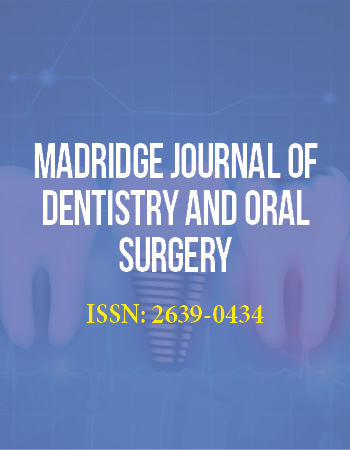International Conference on Dentistry
April 3-5, 2017 Dubai, UAE
Is oral health deteriorating? Results from epidemiological studies in Sweden 1983-2013
Uppsala University, Sweden
Aim. The aim of this studies was to investigate the prevalence of alveolar bone loss (ABL), manifest caries and the influence of socioeconomic factors and smoking using data from four cross-sectional epidemiological studies in an adult population, 35-85 year of age in 1983, 2003, 2008 and 2013.
Material and Methods. A random sample of 1012-2243 individuals answered a questionnaire regarding e.g. socio-economic, tobacco habits and oral hygiene habits. A clinical examination was performed including radiographs. Severity of ABL was classified into three categories depending on the amount of bone loss measured on radiographs; no; moderate or severe ABL and manifest caries lesions was registered. Complete data in the different study years were obtained from 78% - 52%.
Results. The prevalence of severe ABL the different study years was 7% in 1983, 5% in 2003, 10% in 2008 and 7% in 2013. The increase between 2003 and 2008 was statistically significant as well as the decrease between 2008 and 2013 (p<0.05).
The prevalence of moderate ABL was 45% in 1983 and decreased significantly to 16% in 2008 but increased significantly to 35% in 2013 (p<0.05).
Calculus seen on radiographs increased significantly from 13% in 2003, 22% in 2008 and 32% in 2013.
The proportion of individuals with at least one manifest caries lesion was 58% in 1983 and decreased significantly to 34% in 2008 and was in 2013 33%. In the age group 85 years, the mean number of decayed surfaces was somewhat higher in 2013 than in 2008 (2.4 vs. 1.2).
After adjustment for age, number of teeth and a number of socioeconomic factors, current/former smoking was the variable that correlated significantly with ABL in all study years (odds ratios ranging from 2.53-3.22). Manifest caries lesions was, after adjustment correlated with irregular dental visits, financial limits for dental care, smoking, low education, daily medication and male gender (odds ratios ranging from 1.24-2.03).
Conclusion. During this period of 30 years ABLand manifest caries decreased significantly. However, between 2008 and 2013 a significantly increase in ABL was found and the positive trend in a decrease in manifest caries ceased. The amount of calculus visible on radiographs increased significantly between 2003 and 2013. Socioeconomic factors was found to have limited impact on ABL but was correlated to manifest caries.Smoking was the overall strongest factor associated with ABL and was also correlated to manifest caries.
Biography:
Kristina Edman, RDH since 1983. I have the past 13 years been working at the Center for Oral Rehabilitation, Falun, Sweden,a specialist clinic in periodontology. My special interest is epidemiology of oral health, in particular periodontitis and dental caries. In April 2016, I defended my thesis “Epidemiological studies of Oral Health, development and influencing factors in the county of Dalarna, Sweden 1983-2013”.


